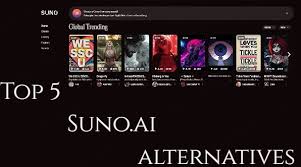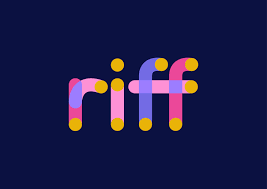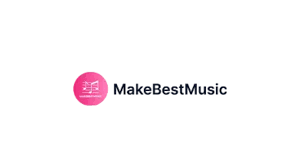Introduction: AI Meets the Sounds of the World
World Music—a term often used to describe music that draws from non-Western traditions—spans everything from Afrobeat and Bossa Nova to Indian classical and Middle Eastern rhythms. It’s rich, layered, and culturally deep.
Now with AI music generators like Mureka and Boomy, creators can instantly generate beats and melodies inspired by global sounds. But how do these two tools compare when it comes to creating authentic-sounding world music?
In this article, we’ll explore Mureka vs. Boomy for world music, evaluating each platform’s sound library, cultural nuance, creative flexibility, and real-world usability for content creators and musicians.

What Is World Music in the Context of AI?
In AI-generated music, “world music” usually refers to:
Non-Western rhythms and scales (e.g., pentatonic, raga-based, maqam)
Traditional instruments (e.g., tabla, oud, balafon, erhu)
Regional vocal textures (chanting, folk styles, ornamentation)
Culturally specific genres (e.g., Afrobeat, K-pop, Latin cumbia)
Generating music in this category isn’t just about style—it’s about cultural authenticity and sonic storytelling. That’s what makes the comparison between Mureka and Boomy especially relevant.
Mureka Overview: Real-Time AI With Global Flavor
Mureka AI is a generative audio tool designed for professionals who need precise musical control and multicultural genre support. It uses cutting-edge transformer-based audio models that can generate full-length songs or clips based on detailed prompts.
Strengths:
Fine-grained genre targeting: Afrobeat, Samba, Middle Eastern, Lo-fi Reggaeton
High-resolution output: Great for licensing or streaming
Advanced prompts: Supports emotional cues, instrumentation, and rhythm
World Music Capabilities:
Offers a wide range of culturally distinct genres
Recognizes instrumental requests (e.g., "Use duduk and darbouka in a minor scale")
Great for music that crosses cultural boundaries—like Afro-jazz or Latin fusion
Limitations:
Requires more prompt engineering
Interface is slightly more advanced; better suited for semi-pro or pro creators
Boomy Overview: User-Friendly Music for the Masses
Boomy is a beginner-friendly AI music creation tool built for speed and social sharing. With a few clicks, users can generate tracks in various styles, add vocals, and even distribute to Spotify or TikTok.
Strengths:
One-click generation for instant results
Integrated distribution platform
Fun, creative templates for pop, electronic, lo-fi, and more
World Music Capabilities:
Limited regional templates (e.g., “World” genre includes vague global styles)
Good for fusion-based experiments (e.g., Latin pop or Indian trap)
Accessible for non-musicians exploring cross-cultural sounds
Limitations:
Lacks specific instrument control
Can sound generic or Westernized
Less accurate when generating culturally rooted or traditional genres
Feature-by-Feature Comparison: Mureka vs. Boomy for World Music
| Feature | Mureka | Boomy |
|---|---|---|
| Genre Depth | High (Afrobeat, Bossa Nova, Arabic, Indian classical) | Medium (Global pop, generic “World” styles) |
| Prompt Control | Detailed text/audio prompts supported | Style templates only |
| Instrument Choice | Customizable (e.g., sitar, talking drum, shakuhachi) | Limited or random instrumentation |
| Cultural Authenticity | High (uses genre-specific phrasing, rhythm, timbre) | Moderate (often Westernized patterns) |
| Ease of Use | Intermediate to Advanced | Beginner-friendly |
| Output Quality | Studio-grade, multitrack potential | Suitable for demos, social content |
| Best For | Pro music creators, global fusion projects | TikTokers, indie artists, casual creators |
Real-World Use Cases
Case 1: Afrobeat Content Creator
A YouTuber needed background music that sounds like Burna Boy meets Fela Kuti.
? Mureka delivered a rich, layered Afrobeat loop with authentic percussion and horns.
?? Boomy's version lacked regional rhythm complexity and sounded more like tropical house.
Case 2: TikTok Dance Challenge with Latin Fusion
A TikTok influencer wanted a 30-second Latin reggaeton track with a global twist.
? Boomy quickly created a catchy loop that worked well for short-form video.
?? Mureka could generate something higher quality, but required more prompt tuning.
Case 3: Meditation App Seeking Middle Eastern Soundscape
A wellness startup needed 60-second ambient music inspired by Persian and Sufi traditions.
? Mureka created a beautiful soundbed with ney flute and frame drum textures.
?? Boomy lacked instrument control and defaulted to soft piano and synth layers.
Pros and Cons
Mureka Pros:
Detailed control over genre, instruments, and emotion
Suitable for professional licensing
Strong multicultural dataset and audio fidelity
Mureka Cons:
Requires some music/audio literacy
Slower than one-click tools
Boomy Pros:
Extremely easy to use
Great for fast, casual world-inspired music
Integrated with distribution platforms
Boomy Cons:
Limited cultural depth
Sounds may feel repetitive or overly synthetic
Conclusion: Which One Wins for World Music?
If your goal is authenticity, cultural nuance, and audio quality, Mureka clearly offers more power, flexibility, and depth when creating world music.
However, if you just need quick global-inspired beats for social media, podcasts, or casual releases, Boomy is a fun and fast way to explore cross-cultural sounds without technical barriers.
The choice depends on your use case:
?? Mureka for depth and authenticity
?? Boomy for speed and shareability
FAQs
Can I use Mureka or Boomy for commercial world music tracks?
Yes. Mureka offers high-res export for licensing; Boomy supports distribution to Spotify and TikTok.
Which platform supports traditional instruments better?
Mureka. You can request specific instruments like tabla, oud, or balafon through prompts.
Is Boomy good for authentic world music genres?
Not quite. It’s better for global-inspired pop or hybrid genres, not for purists.
Can I combine both platforms?
Yes. For example, generate a base melody with Boomy, then enhance with Mureka’s instrument layers.
Learn more about AI MUSIC







